Building our Flock with Breed Blocks
We raise heritage breed chickens for eggs and meat. They are not socialized much. Over the years we’ve raised 16 different breeds. The ones we selected were only breeds that would be dual purpose. They all came from large hatcheries, 4 different ones. The first 4 years were straight run, then just hens with occasionally a few rooster mistakes. Flocks were 75 birds for broilers and we culled between 16 - 21 birds for the layer flock from that.
Our only surviving pet hen, Ernie, came from the first flock. She’s a Barred Rock, a breed known as a good forager. We’ve had them in 6 flocks and found them to be very independent. Ernie became a pet because she would not stay in the pen.
We’ve had New Hampshire Reds in 3 of the flocks. They were good layers, ok for meat but a bit aggressive. Each flock had 1 or 2 that would go after any exposed fingers or toes. They were also a bit hard to handle.
We had Buff Orpingtons in 2 of the flocks. We found them very easy to handle and friendly. But they did poorly as meat birds and all too often went broody. They are a pretty bird to have in a flock, with their golden color and thick feathering.
We raised black Jersey Giants one year. They are a very stately bird but they took way too long to mature, about 24 weeks, and were not very good layers. They went broody a lot. They were very easy to handle, nice birds to have in a flock, but they did not meet our requirements. There was also a problem with a lot of genetic defects probably due to the small gene pool, as they were considered endangered, currently upgraded to watch.
One breed that did very well here were Australorps. They grew well as meat birds and laid very well. Our best egg year was the year we raised them, so we are going to include them in each flock from here on. They were easy to handle and didn’t go broody.
Another breed that did well here, and will be part of the flock from now on, was Cuckoo Marans. They are renown for laying chocolate colored eggs. They are good layers and also put on good weight as layers. Another easy to handle breed that is not aggressive.
One breed that did exceptionally well here was Blue Laced Red Wyandottes. They were an endangered breed and you could only get a few straight run chicks. We got 6 and 3 were hens. All 3 hens culled as very good or excellent layers. They all put on weight well. But they were pretty expensive as chicks so not a feasible addition to our roster.
Some of the other breeds that did not do well here were Buff and Partridge Rocks, Dominiques, Speckled Sussex, and Delawares.
McMurray:
2008 Year 1:
26 Cornish Cross, straight run - never, ever again! We want chickens to behave like chickens.
26 Barred Rocks, straight run – too independent
26 NH Reds, straight run – aggressive, hard to handle
1 Exotic rooster - died
Avg. Weight gain: 2 lb. 3 oz at 161 days
Avg. Laying ROL: unknown, no record
Notes: Commercial feed
McMurray:
2009 Year 2:
26 Buff Orpingtons, straight run – easy to handle, much too broody
26 NH Reds, straight run - good weight gain, aggressive, hard to handle
1 exotic rooster – Bearded Buff Laced Polish rooster - noisy
Avg. Weight gain: 2 lb. 9 oz. at 153 days
Avg. Laying ROL: unknown, no record
Notes: Commercial feed
McMurray:
2010 Year 3:
26 Jersey Giants, straight run – easy to handle, took 20 – 22 weeks to finish, several genetic problems
26 NH Reds, hens - good weight gain, aggressive, hard to handle
Avg. Weight gain: 3 lb. 8 oz. at 152 days
Avg. Laying ROL: unknown, no record
Notes: Commercial feed
McMurray:
2011 Year 4:
26 Partridge Rocks, straight run -
26 Buff Rocks, hens –
Avg. Weight gain: 4 lb. 1 oz. at 156 days
Avg. Laying ROL: 44%
Notes: Organic feed
McMurray:
2012 Year 5:
Blue Laced Red Wyandottes, straight run – these birds culled at very good to
excellent for laying, and grew well as meat birds.
Rather stand-offish to handle
Buff Orpingtons, hens – culled poorly as layers, and were extremely broody
Australorps, hens – grew well as meat birds, ok as layers, ok to handle
Cuckoo Marans, hens – good layers, grew ok for meat birds, ok to handle
Dominiques, hens – very flighty, VERY small, good layers of small – medium eggs
Avg. Weight gain: 3 lb. 0 oz. at 70 days
Avg. Laying ROL: 48%
Notes: Organic feed
McMurray:
2013 Year 6:
10 Barred Rocks, hens - too independent
15 Delawares, hens – growing well as meat birds
25 Australorps, hens - growing well as meat birds, ok as layers, ok to handle
Avg. Weight gain: 3 lb. 0 oz. at 171 days
Avg. Laying ROL: 65%
Notes: Organic feed
Mt. Healthy:
2014 Year 7:
15 Barred Rocks, hens – too independent
60 Buckeyes, hens – very slow to mature, slow to start laying
Avg. Weight gain: 2 lb. 6 oz. at 138 days
Avg. Laying ROL: 69.75%
Notes: Organic feed
Stromberg’s
2015 Year 8:
25 Barred Rocks, hens – too independent
25 Cuckoo Marans, hens - good layers, grew ok for meat birds, ok to handle
25 Speckled Sussex, hens – small size, medium eggs, escape artists, docile,
slow to lay
Avg. Weight gain: 2 lb.11 oz. at 130 days
Avg. Laying ROL: 52%
Notes: Organic feed
Meyer Hatchery:
2016 Year 9:
20 Barred Rocks, hens – too independent
30 Cuckoo Marans, hens - good layers, grew ok for meat birds, ok to handle
30 Australorps, hens - grow well as meat birds, ok as layers, ok to handle
Avg. Weight gain: 2 lb.10 oz. at 124 days
Avg. Laying ROL: 70%
Notes: Organic feed plus Breakfast of Champions
2017 Year 10
Stromberg’s
27 Barred Rocks, hens – too independent
25 Australorps, hens - grow well as meat birds, ok as layers, ok to handle
30 Cuckoo Marans, hens - good layers, grew ok for meat birds, ok to handle
Avg. Weight gain: 2 lb.14 oz. at 122 days
Avg. Laying ROL: 65%
Notes: Organic feed
For 2018 Year 11 we are going with Stromberg’s again and plan to have:
60 Barred Rocks, hens – too independent
30 Buckeyes, hens
We hope that getting the Buckeyes from a better source will mean better quality of weight gain and laying ability. If not, then we will go back to the Australorps. We are getting more hens to have more for the freezer and perhaps to sell some of the poorer layers from the cull.

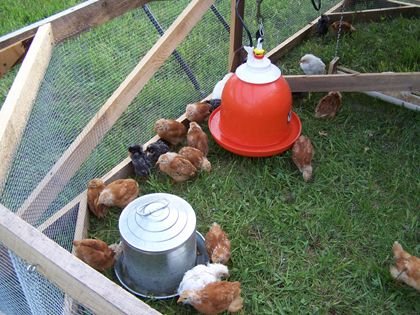
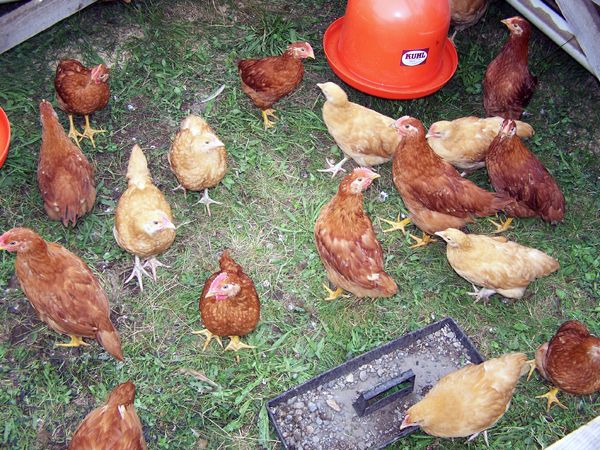
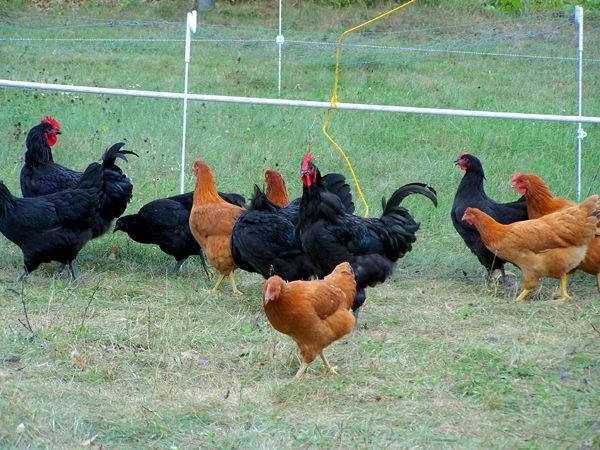
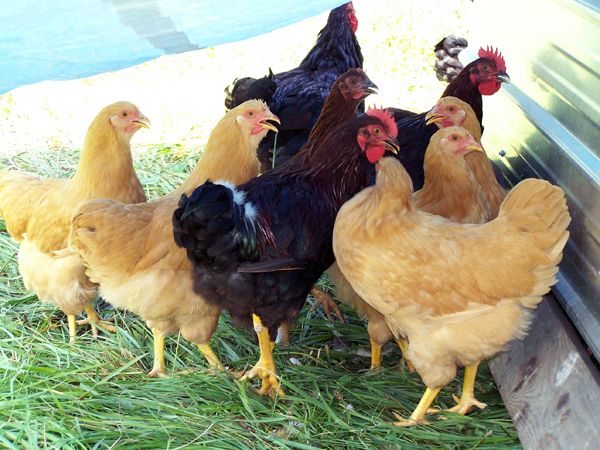

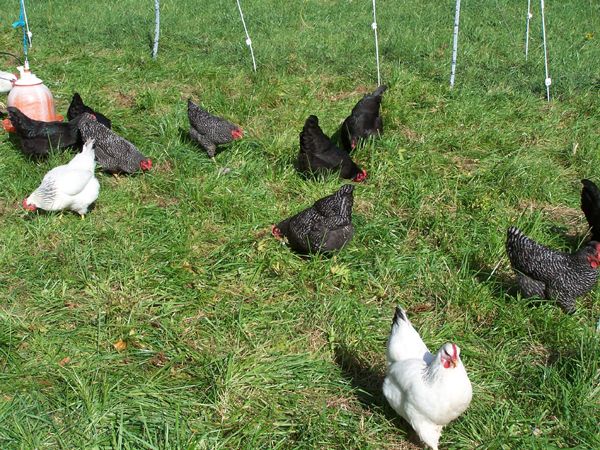
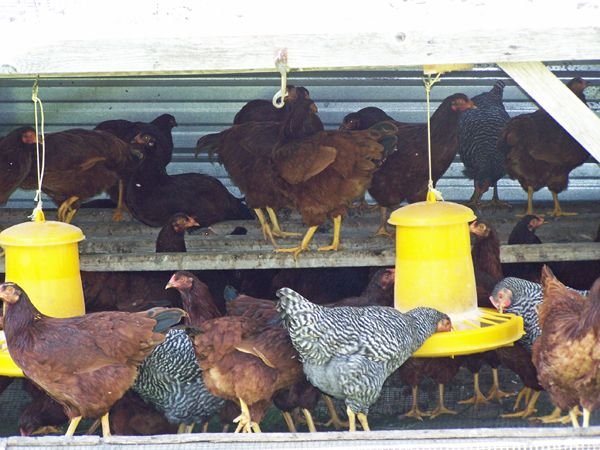

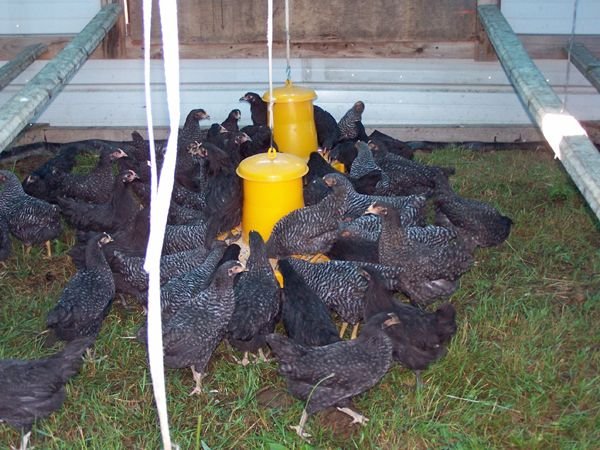
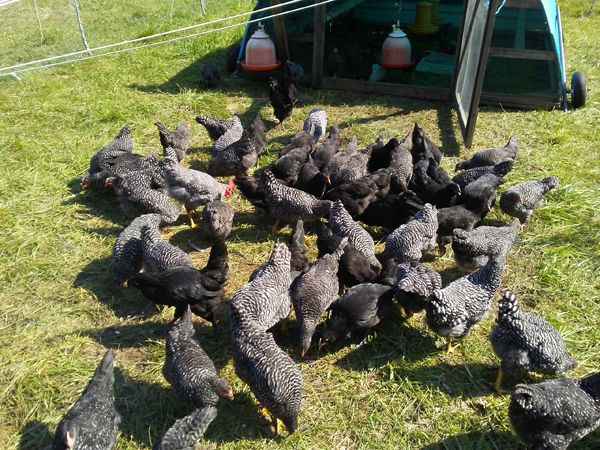
hy @goldenoakfarm pz vote follow and resteem my blogs i will support you same